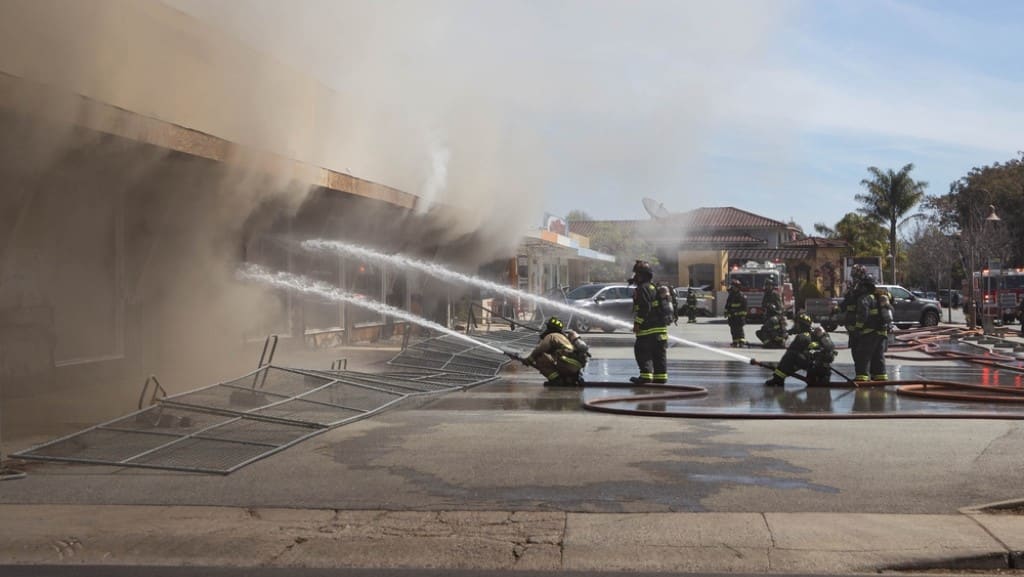NIOSH guidance sheds light on firefighter safety during strip mall fires
- October 5, 2023
- 9:31 am


Iain Hoey
Share this content
A deeper look into strip mall fires
The National Institute for Occupation safety and Health (NIOSH) has recently released a guidance document highlighting the dangers firefighters face when combating strip mall fires.
The report states that due to unique construction features, such fires are categorised as low frequency but high-risk incidents.
Features such as limited entry and egress, high heat release rate, and a potential for entanglement add complexity to firefighting operations.
Understanding the risks in strip malls
Strip malls can greatly vary in terms of their construction.
Many strip malls, particularly in the United States, are one-story buildings housing diverse businesses like restaurants, stores, medical offices, and sometimes even residential spaces.
Often, even if businesses are separated by walls, they might share common attic spaces.
This architectural design can lead to a rapid spread of fires. In addition, not all strip malls have adequate fire protection systems in place.
Firefighting in these malls comes with challenges such as potential entanglement in drop ceiling assemblies, maze-like conditions, risk of collapsing roofs and walls, and limited access due to security measures.
Moreover, some malls may store hazardous materials, posing further risk.
Strategies and tactics for battling strip mall fires
Fire departments need to account for several non-alterable factors when responding to strip mall fires, including the building’s design, age, size, and type of occupancy.
However, incident commanders should utilise initial information, such as the fire’s location and the conditions of the surroundings, to formulate a comprehensive incident action plan (IAP).
This plan should focus on:
- Completing search and rescue operations.
- Managing fire control and preventing its spread.
- Efficiently preserving property whilst reducing firefighters’ exposure to harmful combustive products.
In the age of technology, the use of aerial footprints or maps, possibly obtained via drones, can assist the incident commander in understanding the structure better.
Such insights can show access points, hydrant locations, heavy objects on roofs, utility shut-offs, and more.
Considering the layout and packed nature of strip malls, firefighters need to be cautious.
The obstruction caused by shelving, stock, and displays can hinder movement and hose deployment. In such scenarios, firefighters may become disoriented or trapped.
It is also vital for the incident commander to coordinate fire attacks with ventilation and forcible entry.
The doors, especially on Side Charlie of strip mall units, which typically lack windows, require a higher level of forcible entry.
For a more detailed understanding, interested parties can read the full NIOSH guidance here.
IFSJ Comment
The release of NIOSH’s guidance on strip mall fires is timely and sheds light on an often-overlooked aspect of firefighting.
The unique challenges posed by strip malls, from their construction to the variety of businesses they house, make understanding these environments crucial for firefighters.
This guidance not only emphasises the importance of preparedness but also highlights the role of technology, like drones, in ensuring the safety of our brave



